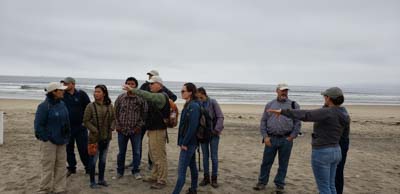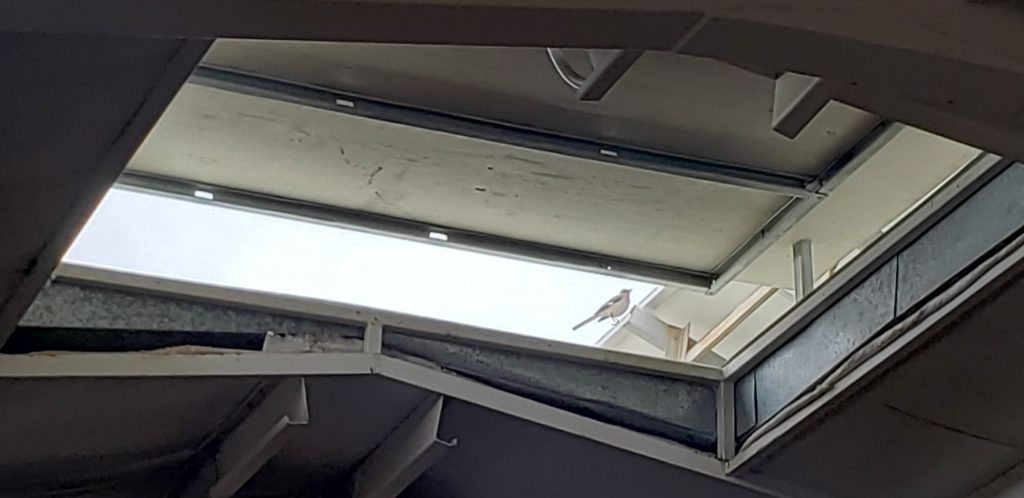
The Science Working Group poses in front of the GECI office, Ensenada, Baja California (photo courtesy of GECI).
By Emily Clark, Sonoran Joint Venture
In June 2019, the SJV Science Working Group met in Ensenada, Baja California. After two years of only being able to hold meetings in the U.S., it was especially exciting to be back in Mexico. Twenty-four people representing ten partner organizations participated, including multiple new members.

The group makes a site visit to Playa El Ciprés to learn about Terra Penninsular’s beach protection efforts for Snowy Plover through the Coastal Solutions Fellowship Program (photo by Emily Clark).
Discussions centered on biological planning, prioritization, monitoring, and evaluation for bird and habitat conservation in the SJV region. SJV staff members presented on the Awards Program and led a discussion of the priorities for 2020, as well as introduced the Borderlands Avian Data Center, a collaborative, online data management tool. Group members gave presentations on projects including Spatial Prioritization for Endangered Yuma Ridgway’s Rail; Waterbird Monitoring in the Gulf of California; Status of Tricolored Blackbirds in Mexico; Island Biosecurity on Isla Natividad; Binational Long-billed Curlew Monitoring, and more. We also discussed current topics like the proposed expansion of the Motus Wildlife Tracking Network in the west.

Stealing the spotlight: This singing Northern Mockingbird hanging out on the roof was competing with presenters for best voice (photo by Emily Clark).
Interested in joining? Membership to the Science Working Group is open to anyone, but particularly program or field biologists who represent an institution with an interest in bird and habitat conservation in the SJV region. Sign up for our listserv for updates about the group. For more information about getting involved, contact SJV Science Coordinator Adam Hannuksela.
Many thanks to our partners at Grupo de Ecología y Conservación de Islas (GECI), who not only hosted us at their office, but also were instrumental in the planning and execution of the meeting.


 English
English  Español
Español